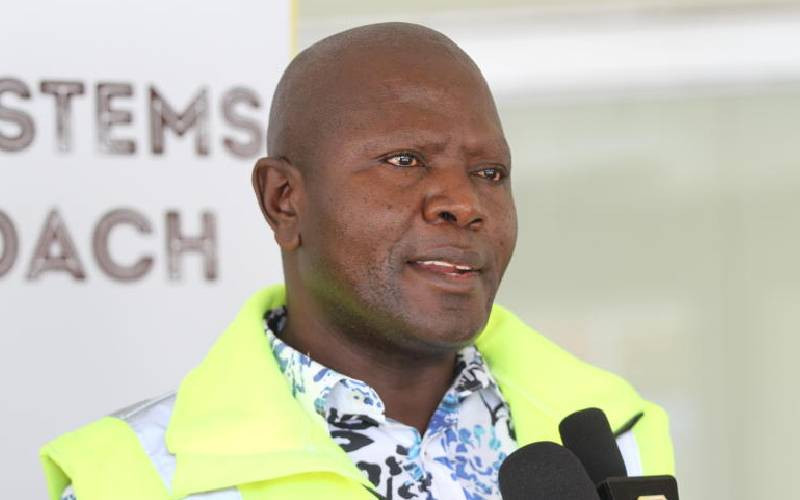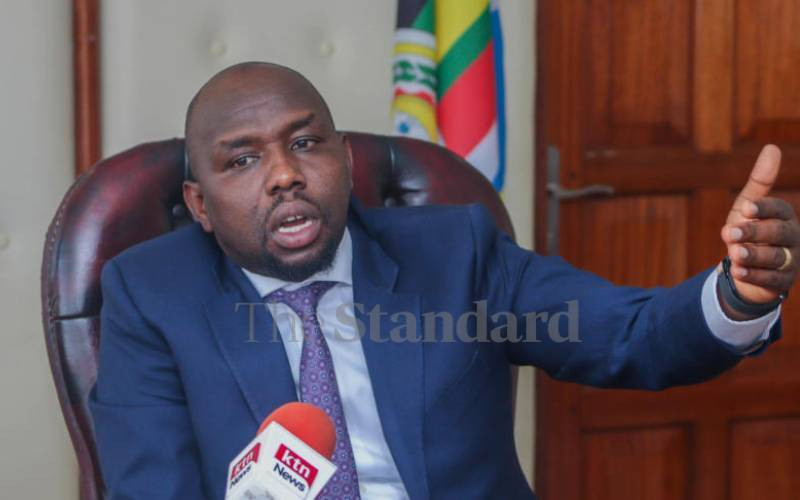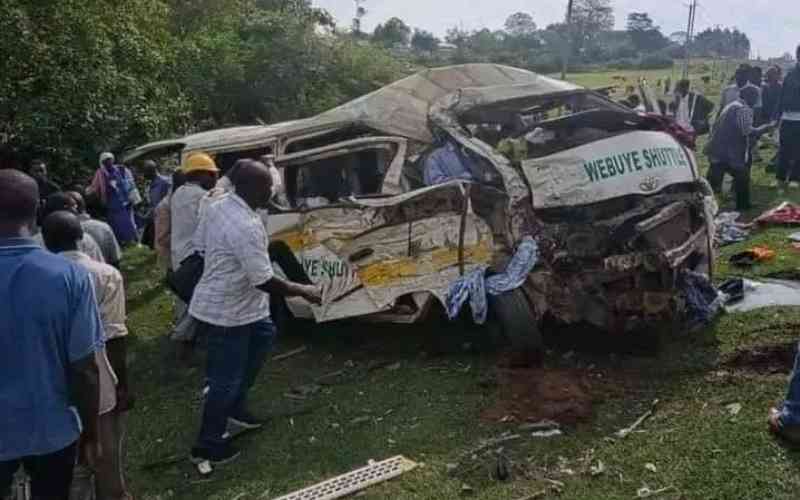Nairobi; Kenya: It was a fad — and even motorists’ anger seems to have died down.
Like many others before it, this was another road safety fad and that is not surprising in a country where everything is treated like a hit song.
Some weeks ago, there was hullabaloo on new media platforms over the speed limits that had been introduced by some transport and safety authority which does not seem to understand what safety is.
Motorists were mad, irked by the fact that they were being told to slow down in order to reduce traffic accidents or to be safe, yet safety is something that has never been espoused in the lives of Kenyans.
Slowing down, they argued will not solve any problems — but what was more annoying was lack of road signs informing them where to start slowing down and where to rev it up and drive as if they were in a Formula One race track. Annoying them further were traffic police officers who were coming out of the bushes just to milk them dry after proclaiming, without any proof whatsoever, that they were driving over the stipulated speed limit.
It is my uneducated guess that the noise has died down, and the safety authority’s zeal to make the roads in and out the city safe is no longer a priority.
Roads should be safe, no doubt. Kenyans should espouse safety as a matter of fact, and road accidents should not be one of the leading causes of deaths in Kenya now that it has been established that help is never so near after an accident and the first responders are thugs who rob the victims.
That is the tragedy of driving on Kenyan roads. Motorists are not safe anywhere and even the law enforcement agencies and other State entities do not offer much solace.
Since the noise had died down, it is safe to write that this campaign is as good as over. It is done with, and not likely to be revived unless some deaths occur, and some government knee decides to jerk itself, foam at the mouth and think with its fingers on new media platforms over road safety.
That is the time when some poorly-thought out campaign will be launched in a matter of hours, and it will be over after a few minutes.
That will not be just because it will be poorly executed, but the people it is supposed to protect will deem it a hindrance to their pursuit of happiness, or a mad rush to emergency wards of equally ill-equipped public hospitals whose staff have no incentive whatsoever to save lives.
Why Kenyans hate employing safety measures is a mystery.
It is equally a mystery why the government entities that come up with all these lopsided and half-hearted road safety measures have never realised that the problem does not start at the road. That is where it ends. Literally in as much as that is where journeys and lives end.
Telling people to slow down and live is the oldest road safety campaign the world over. It was there even before the safety belts were introduced and some countries started the buckle up and live campaigns.
Stay informed. Subscribe to our newsletter
But slowing down and living as a road safety campaign cannot work when it is not supported by other back of the room policies and measures that instil not only discipline in the minds of road users but also make them understand that they are the ones most likely to be victims in an accident.
I mean, they are the first victims because kerbs, bollards, road medians, dividers and tress, plus buildings and vehicles abandoned or parked by the road sides are made of either concrete, metal or both and do not require medical help when they are climbed over, crashed on or hit by errant and drunken drivers.
Kenyan road users or just Kenyans in general — in all levels of the economy and governance —have never internalised the commonsensical adage that “safety starts with me” and always think that their carelessness and recklessness will always hurt or injure another party.
Safety as it were is never inculcated in a Kenyan’s culture and the so-called parental authority’s numerous entities have never realised that for road carnage to be reduced, the safety campaigns will have to start at an earlier stage before someone gets the spine to sit behind a wheel and set off with the thought that it is another party that will get hurt. It is not possible to tell a Kenyan who believes that he is the best driver just because he owns a vehicle that he needs to be safe when he never acquired proper driving skills.
How can someone who attended a non-regulated backstreet driving school for a few hours just as a formality because he was buying the licence anyway supposed to understand what safety on the road is all about?
How will the corrupt driving school owner who bribed his way through corrupt State entities in order to get a business permit understand what safety is all about when his aim is to recover what he paid to get the go ahead to go and churn out unskilled motorists?
Is it really possible to tell an extremely busy traffic police officer that a driving test is much more than just cranking the vehicle and moving it forward by a few inches when he is underpaid and overworked and is in a rush to go net supposed speedsters who are ready to pay bribes so that they can be free to go and maim other road users?
The latest campaign, another poorly-thought out idea which was treated like another fad, was not going to work. It will not work, just like others before it.
It is not possible to have long-term measures that will save lives when policy makers or the busybodies who think of them are just groping in the dark and have not conducted some sort of research or a study to determine what it is exactly that makes Kenyan roads unsafe. Then there is the issue of signage. How many Kenyan motorists understand them? For a start, how many Kenyan motorists have seen the pamphlet called the Highway Code?
Has the wrongly named transport and safety authority ever conducted any elaborate sensitisation campaigns to educate road users on road safety or they just to sit back at their equally unsafe offices and dream up unworkable ways that only act to increase road carnage they are just revenue streams for law enforcement officers?
The aim of the latest punitive fad is driving at lowest speeds, but isn’t it common knowledge that the biggest cause of road chaos and accidents in the country is carelessness, recklessness and total disregard for laid down procedures?
 The Standard Group Plc is a
multi-media organization with investments in media platforms spanning newspaper
print operations, television, radio broadcasting, digital and online services. The
Standard Group is recognized as a leading multi-media house in Kenya with a key
influence in matters of national and international interest.
The Standard Group Plc is a
multi-media organization with investments in media platforms spanning newspaper
print operations, television, radio broadcasting, digital and online services. The
Standard Group is recognized as a leading multi-media house in Kenya with a key
influence in matters of national and international interest.
 The Standard Group Plc is a
multi-media organization with investments in media platforms spanning newspaper
print operations, television, radio broadcasting, digital and online services. The
Standard Group is recognized as a leading multi-media house in Kenya with a key
influence in matters of national and international interest.
The Standard Group Plc is a
multi-media organization with investments in media platforms spanning newspaper
print operations, television, radio broadcasting, digital and online services. The
Standard Group is recognized as a leading multi-media house in Kenya with a key
influence in matters of national and international interest.








